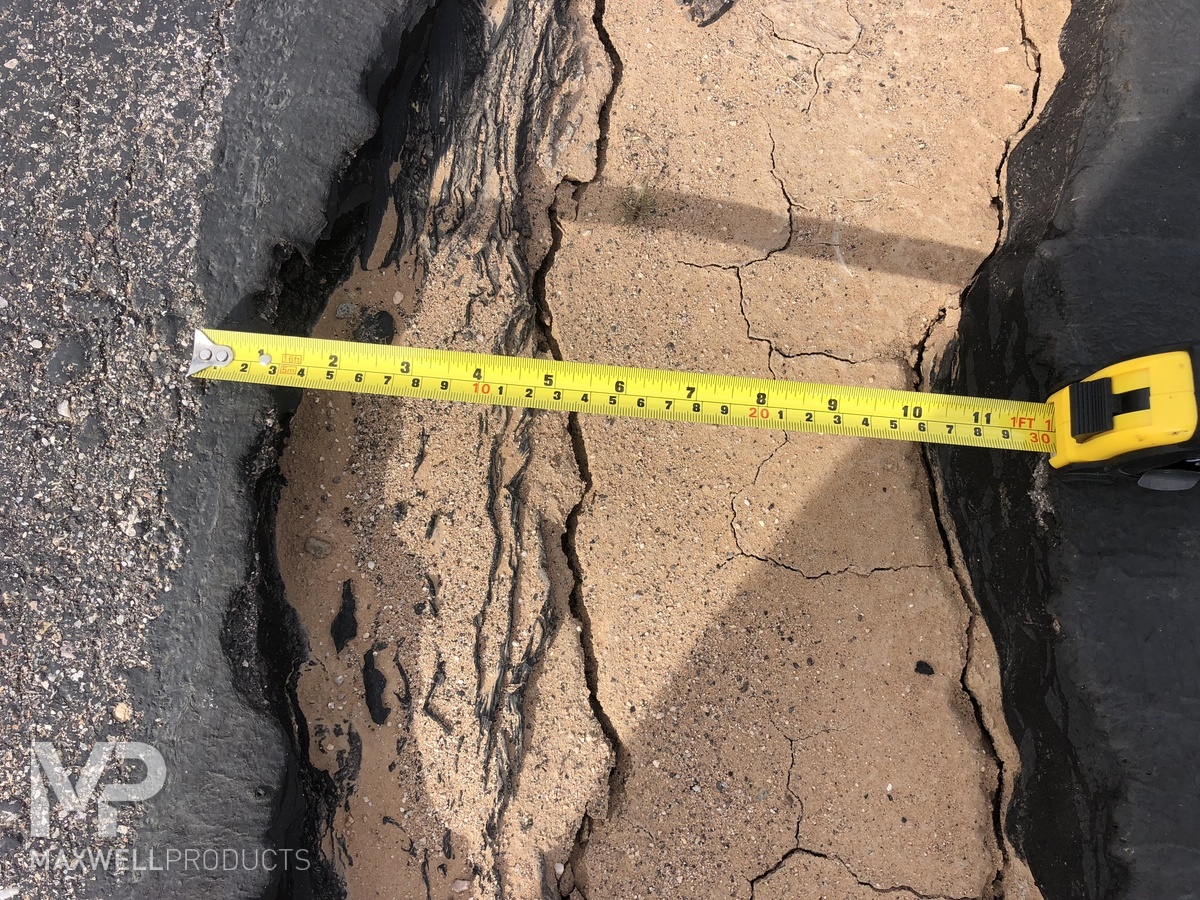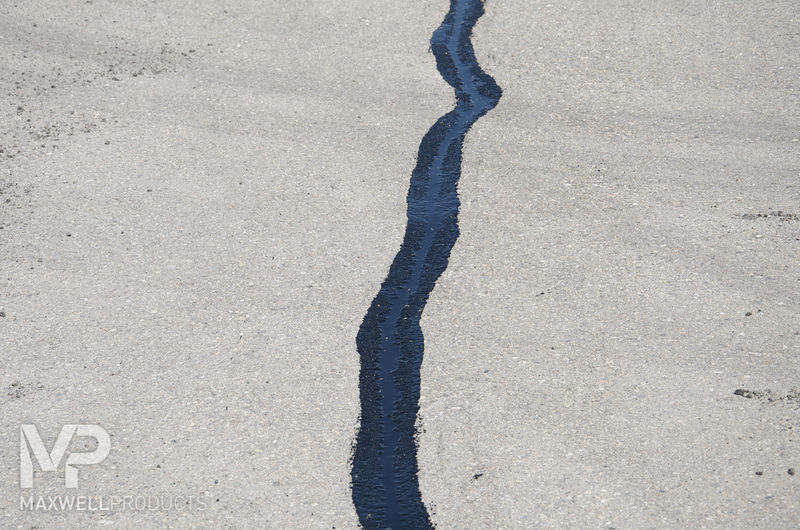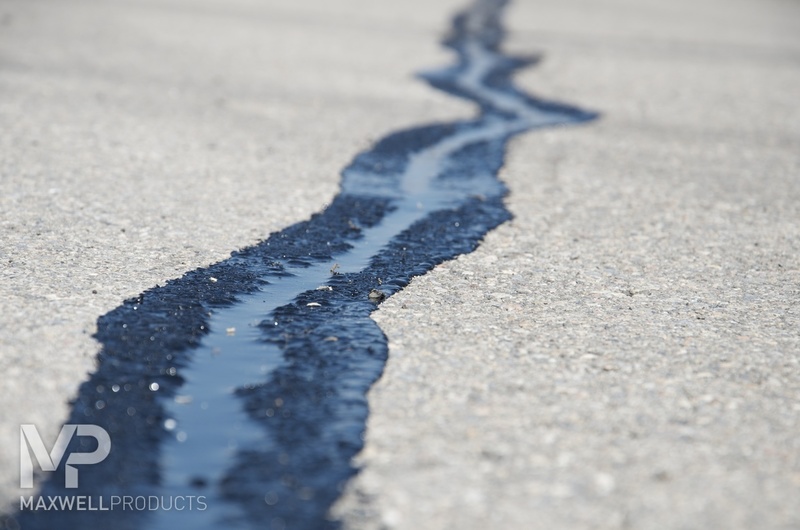The Western United States has been very hot this year to say the least. Just a few weeks ago, Portland, Oregon hit a temperature of 116 degrees Fahrenheit, breaking the previous record by a full nine degrees. Even Lytton, Canada broke that nation’s all-time record, reaching 121 degrees Fahrenheit! According to the United States National Weather Service, these record temperatures resulted from a dome of high pressure which effectively cooked the Northwest. You may have heard the saying that it’s so hot you can fry an egg on the pavement, but while that kind of heat isn’t at all good for people, it’s not so great for the pavement either. Because of rising temperatures and more frequent heat waves, an important aspect in the future of pavement maintenance is learning how to beat the heat.
In the South and Southwestern areas of the United States, this kind of sun/heat damage is not new, as pavements are continually assaulted by that large golden globe in the sky. For asphalt pavement, ultraviolet bombardment causes rapid aging and oxidation of bitumen1. In Arizona, for instance, summer temperatures are so extreme that asphalt pavements can actually shrink, causing very large transverse cracking. Concrete pavement isn’t immune to the damaging effects of the sun, as UV radiation causes carbonation2, which reduces tensile strength over time, as well as long-term durability.
For initial construction, one way to minimize UV damage to pavement is to install variants with a high SRI (Solar Reflectance Index). Generally, concrete has a high SRI, while the black surface of asphalt has a low SRI. But formulation matters, and different mixes, polymers, and even aggregate can alter the base SRI of a given surface.
Once put down, pavements eventually require maintenance, and starting with the right pavement preservation products, those formulated to both set up quickly and minimize sun damage, is essential. Maxwell products R&D department studies many different ways to beat the heat and the ultraviolet radiation.
“UV light can oxidize organic compounds, which makes asphalt-based products brittle,” said Maxwell Products Materials Engineer, Mike Guymon. “If you have less polymer and more tire rubber, then the materials are not as affected by the sun. They stay flexible, and you can even tell by the appearance of the product. They stay darker, blacker. Tire rubber has a higher percentage of carbon black.”
Why is that important? What is carbon black (and why should we care)? According to leading global specialty chemical and performance materials company, Cabot Corporation, “UV radiation is not damaging to carbon black, and carbon black’s presence slows or prevents the destructive absorption of radiation that can impact flexibility, mechanical strength, and opacity of the polymer.3”
“The tire rubber was the very beginning,” Guymon said, “and we’ve tested many other materials since then.”
This research and testing has led to the development of sealants like Elastoflex 61R and mastics like GAP-Mastic D. (But be sure to contact your MPI sales professional to recommend the proper material for your geographic area and climate.) And research is continuing to develop sun-mitigating materials. In a recent Southern Utah test, experimental material reduced UV-related cracking by 90% after six months.
“Our GAP-D material works very well in hot climates,” Guymon noted, “but we’re working to make it even better. In May, we went down to Phoenix and performed a new set of tests. We picked different areas, some were huge cracks, some four to five inches wide and six inches deep. We tested several products in Queen Creek. Probably next spring we’ll have the data we need.”
And while Maxwell Products works on the problem from a manufacturing, chemistry, and formulation side, there are things each municipality, contractor, and pavement maintenance department can do to improve pavement conditions.
HOT WEATHER PAVEMENT MAINTENANCE RECOMMENDATIONS:
Tracking:
Tracking is a condition to watch when crack sealing or applying mastic or patching solutions. When temperatures reach into the triple digits, asphalt-based materials can activate and become soft and sticky, which can lead to the material sticking to tires or raveling, as the binder and aggregate become separated by the combination of heat and mechanical force. This may require an intermediary between vehicle tires and the maintenance material. We recommend Takless for sealants and topping stone (see below) for GAP-Mastic and GAP-Patch applications.
“The hottest weather we’ve worked in was Palm Springs, 115 degrees,” said Derek Pham, Superintendent at Global Road Sealing of Southern California. “At the time, we set up traffic control till [the material] sets up. If we’re in a hurry we throw sand on it, especially with high traffic. When it’s super hot like that, detak or water with soap doesn’t do anything. It’s just better to set up traffic control. Usually in hot weather below 100 degrees, cracks under one (1) inch, detak or water with soap is enough.”
Setup Time:
In extremely hot climates, hot-pour pavement maintenance materials may remain hot for longer than usual, increasing the time to traffic, but there are options. One is to use a material designed to setup quickly.
“Maxwell Products has a line of Sealants that set up in less than 10 minutes in the summer temps, so you can have confidence that your sealant will not come up with vehicle or foot traffic,” said Chris Robb, Maxwell Products’ sales representative in Nevada.
Rapidly cooling the material may be a requirement for some jobs. That may entail additional steps outside the usual installation procedure.
“Caltrans uses a street sweeper with brushes off and water on to cool down Gap-Patch or -Mastic,” Pham said. “They have also used ice on Patch-repaired potholes to reduce time to open traffic.”
Topping Stone:
Maxwell Products generally recommends adding topping stone to all GAP-Mastic and GAP-Patch installations. For hot weather applications, topping stone assists with tracking issues and provides both an improved friction surface and greater UV protection for the underlying material. For GAP-Mastic, be sure surface temperatures have cooled to 150 degrees Fahrenheit before applying topping stone to keep the aggregate from sinking into the binder. For GAP-Patch, a more robust, structural material, topping stone can be applied almost immediately.
“Topping stone on crack sealant might be one of the best things anyone can do,” Guymon said. “We have it. It’s readily available. Or Black Beauty, an opaque sand-like material.”
Surface Treatments:
The UV protection of both the pavement and the pavement maintenance materials can be improved with a surface treatment.
“Sealcoat, slurry, chip seal, and micro-surfacing treatments are always a must to protect any asphalt surfaces,” Robb said. “These types of treatments can only be done in the warmer months of the year.”
More Frequent Maintenance:
One common response from Guymon, Robb, and Pham was that pavement maintenance needs to be more immediate in extremely hot conditions. When damage from heat and sun occurs, it needs to be treated quickly to avoid the kind of cracking and surface distress that can lead to water penetration, pothole formation, and base damage.
“Fixing the wide cracks in the summer time not only will help with ride quality, but will also give the cracks water protection when the fall rain storms start,” Robb said.
To beat the pavement heat, you need to both select the right material and employ a few tricks of the trade. And keeping the crew cool is also a good idea. Don’t forget the men and women working on that hot pavement in the bright sunshine. Be sure to keep plenty of cool water and sunscreen on hand for the folks in the safety vests!
-
Shaopeng Wu, et al, “Laboratory Study on Ultraviolet Aging of Bitumen,” Journal of Materials in Civil Engineering, Volume 22, Issue 8 (August 2010). https://ascelibrary.org/doi/abs/10.1061/(ASCE)MT.1943-5533.0000010 ↩
-
Guo Li, et al, “Long-term effectiveness of carbonation resistance of concrete treated with nano-SiO2 modified polymer coatings,” Construction and Building Materials, Volume 201 (March 20, 2019): 623-630. https://www.sciencedirect.com/science/article/abs/pii/S0950061819300042 ↩
-
“Specialty Carbon Blacks for UV Protection and Weatherability,” Cabot.com, accessed July 2, 2021. https://www.cabotcorp.com/solutions/products-plus/specialty-carbon-blacks/for-uv-weatherability ↩







